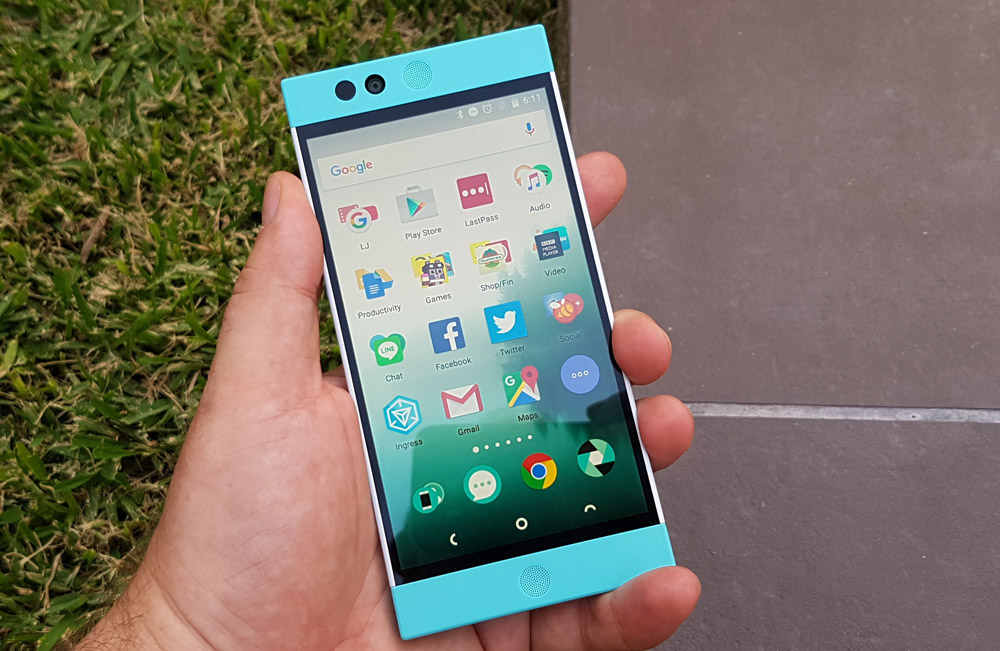
Nextbit’s Robin is the beginning of a curious new age for Android devices. The company’s first smartphone is a darling of Kickstarter crowdfunding, quickly blowing through its funding goal late last year, and establishing itself as a hot device amongst tech-savvy consumers. Now, the phone is here and it’s time to figure out if the hype was worth it.
You’d be forgiven for thinking Nextbit is new to the phone game. The small company (around 30 people, but growing) operates out of San Francisco and is comprised of a number of “exes” – amongst its staff you’ll find ex-Google, ex-HTC, ex-Motorola employees. There’s a surprisingly large amount of knowledge within its walls when it comes to designing, manufacturing and building software for smartphones, so it shouldn’t come as much of a surprise to see the Robin benefit from all of this know-how.
The global smartphone market isn’t an easy place to operate as a new brand, especially in the Android space where you’re going up against a number of established players with massive marketing budgets and even more significant fan communities. It’s actually been a while since we’ve seen a new player emerge — there are some new names popping up in regional areas around the world as Chris found at Mobile World Congress this year, but taking on multiple regions and markets is something smaller companies often don’t do, or don’t tackle at the same time. OnePlus springs to mind as the most recent newbie, and its rise has been the source of some controversy around pedigree, ownership and marketing.
Internally, the phone is no slouch and matches up with the Nexus 5X pretty well on specs with a Snapdragon 808 chipset, 3GB of RAM, 32GB of storage, and a 1080p AMOLED display. There’s also dual front-facing speakers and the phone is one of the first to sport a USB-C port for charging. There’s a 13MP rear camera with dual-LED flash and a 5MP front camera. It’s an impressive package on paper, made even more impressive by the fact that it’s the product of such a small team.
Nextbit is aware that it’s a comparatively tiny player in a big pond, and it’s made a few decisions in bringing Robin to market that show it’s acutely aware of the uphill struggle it faces. The company is very communicative and takes note of where its supporters are – this led to the addition of Australian 4G/4G+ bands in Robin, making it one of the few phones produced by startup manufacturers with support for our networks (well, mostly – they couldn’t get Optus’ Band 40 TDD-LTE in there), and this means they’re happy to ship the phone to Australian customers who purchase on their site. No need to go through freight forwarders, importers and the like — why is it we go through those hoops with other manufacturers, anyway?
Robin also has to stand out against other phones as well if the company wants to stand a chance, and that’s another place where care and attention has paid off. The phone has a distinctive design that turns heads when you put it on a table. It’s got an inviting, playful design that combines simple straight edges with circles and curves and it wants you to pick it up and play with it. The design extends to its accessories too, with cases, USB-C cables and wall chargers for the phone available from Nextbit’s site.
We’ve witnessed the rise of the midrange phone over the past 18 months – devices with “good enough” specs sold at half / two-thirds the price of a flagship phone from the bigger manufacturers. Nextbit is entering that space with a confident swagger, and its first product has near-flagship specs, works in multiple markets around the world and has a wallet friendly price. Nextbit sells the phone for just US $399, with various other prices for cases and accessories. It’ll cost you about US $35 to ship it, putting the whole package within range of the 2015 Nexus 5X.
We haven’t even started to discuss the phone’s unique software promise – its 32GB storage will never run out — or at least, when it runs out it’ll find some free space for you by deleting backed-up items that haven’t been used for a while. The phone comes with 100GB of backup space on Nextbit’s servers that’ll house apps and photos, and archived items can be brought back from this cloud storage space as needed, as seamlessly as possible.
Our Nextbit Robin is one of the first devices off the production line and is the “Mint” variant – it’s got a mint coloured top and tail, with a white body. It’s all matte plastic, and the white body attracts some scuffs but they’re easily dealt with with a quick wipe. It’s an eye-catching phone that’s pleasant to wield in public, especially amongst friends who recognise the product from their newsfeeds. Is this enough to separate it from the rest of the pack? Let’s find out.
- Powerful phone for the price range
- Mostly-stock Android 6.0
- 100GB cloud backup space
- Cloud backup space isn’t as unique as Nextbit would like it to be
- Camera app needs a kick in the pants – pretty serious lag
- Unclear when software updates are coming

Hardware
On your first glance at Robin, you’d be forgiven for thinking you were looking at a brightly-coloured cousin to one of Sony’s phones. There’s a similarity of design where both companies like their square, straight edges and bezels above and below the screen housing front-facing stereo speakers. Robin also features a fingerprint sensor in its power button, mounted on the right edge of the phone.
Yet, while it’s easy to draw comparisons with Sony’s latest and greatest, the reality is that those similarities are only skin-deep. Robin’s bright, playful design makes it more likely to be picked up and looked at, ooh’d and ahh’d over.
Robin might look like it started life as a concept design in someone’s portfolio, but there’s a accomplished simplicity to it that just makes you want to touch it – most of the design team at my office made a very big fuss over the phone when it arrived.
That simple, minimal design is actually deceptively well-considered. Those squared-off edges actually have a pleasant but small curve to them, making it nowhere near as sharp as it looks to pick up and hold in the palm of your hand. The power and volume buttons naturally sit under your fingers and thumb no matter if you’re a lefty or righty.
Interestingly, while Robin’s design is a hit with most people who’ve seen it, there’s still a few here and there that rail against it and simply won’t have a thing to do with it – some people want their phones to be black, black and black with a hint of black. The Mint version of the phone might be a little too bright for some, but there’s also a Midnight version that might sit better with those folks.
Port-wise, there’s a USB-C port for charging on the left of the bottom edge – aesthetically, it would of course be better if it were dead centre but the bottom speaker on the front makes that engineering a bit difficult – Sony only just managed this after going through several generations of front-facing speaker design. The notification LED (just white) is also on the bottom edge. There’s a 3.5mm headphone jack at the left of the top edge, volume up/down buttons on the left and the power button / fingerprint scanner on the right, where you’ll also find the SIM tray. Robin takes a single Nano SIM.
There’s four LEDs on the back of the phone near Nextbit’s cloud logo that animate when Nextbit’s cloud storage is being accessed. It’s a neat touch, although it’s kind of wasted given that users look at their phones from the front and the cloud storage is accessed so infrequently.
The front-facing speakers have a lovely indent, and feature a lot of tiny, precision-drilled holes. Miraculously, they don’t attract dust and pocket lint. They do however cause nearly everyone who’s handled the phone (and myself on my first hands-on time with the phone) to assume it’s a home button and press it. Perhaps Nextbit’s next phone will have a more traditional elongated bar design for the speaker – that would also save some bezel space.
Screen
Robin’s 5.2-inch 1080p AMOLED display is one of the best examples of the technology we’ve seen in a smartphone in this price range. Viewing angles and indoor brightness are excellent, although when you get outside into sunlight you’ll want to pump the brightness up to max.
What I will say against the screen though is that I wish it were a touch smaller. With the larger top/bottom bezels around it accommodating the front-facing speakers, 5.2 inches is just a tad too much of an ask for one-handed operation and it’s the reason the phone is actually markedly larger than the Sony Z5 to which it’s often compared. I feel like a 5.0- or 5.1-inch display might have been better advised.
Sound
For the last few years we’ve been dinging every phone that doesn’t feature front-facing speakers as simply not good enough. It’s nice to see that Nextbit knows this beat and has equipped Robin with two pretty powerful speakers that both face the user – exactly where you want the sound to go.
Pumping the volume up in a quiet room we found very little distortion and a lovely listening experience, but that volume couldn’t stand up to some actual commotion and noise in a social atmosphere. That’s not really surprising given the size of the speakers.

Performance
Robin might not blaze through its workload like 2016’s flagships, but it doesn’t need to. We’re at the point now where phones with midrange processors can well and truly serve you for a couple of years so you can rightly say that the latest spec processors aren’t needed (even if they’re nice).
Robin’s Snapdragon 808 is an interesting deviation from the quad/octa-core processor stock with a hex-core system that provides enough power to handle whatever you throw at the phone while using a little less power than an octa-core system. We saw it in LG’s G4 last year – perhaps an indication that the processor isn’t top-shelf but near enough – and it performed admirably in one of the best phones of 2015.
It’s a shrewd choice that provides power enough to let the system hang with the big boys but not cause a massive hit on battery life. With the processor powering Robin’s 1080p display there’s no point at which you feel like the phone’s left hanging waiting for the processor to catch up, and with 3GB of RAM the system’s multitasking can keep apps in memory a little longer than you’d see on a system with the older 2GB standard.
It does feel like Robin’s storage runs a little slow, though. Installing and removing apps takes just a tad longer than it feels like it should. This could be a sign that storage is a little below spec, or it could be down to Android Marshmallow’s full disk encryption. It’s not something you’ll notice in day-to-day use of the phone, more just a case of “Oh, that’s still installing?” when apps are added to the system.
Battery life
Robin’s battery life is pretty good, although like most phones these days it doesn’t really handle my workload. It’s hard to fault it for that though, because basically nothing does.
What you do get is a decent if unremarkable 2,680 mAh battery and a damn fast charge over its USB-C cable that almost makes up for it. Using Nextbit’s charger (supplied along with the phone for review), the phone recharges to about 50% battery within half an hour of being plugged in.
Robin will get you through a day at work, but you’ll want to charge it in the afternoon if you’re planning to head out for the night. The quick charging over USB-C is also particularly welcome if you’ll be spending a lot of time away from your desk in that afternoon as well.
Less welcome? The number of times I left the cable at home or at work is higher than you’d like, and given this could be most customers’ first USB-C device it’s very likely you’ll need to buy another. Fortunately, Nextbit’s online store sells their neatly-designed flat ribbon USB-C cables at a decent price – you should consider buying a second one if you buy a Robin.
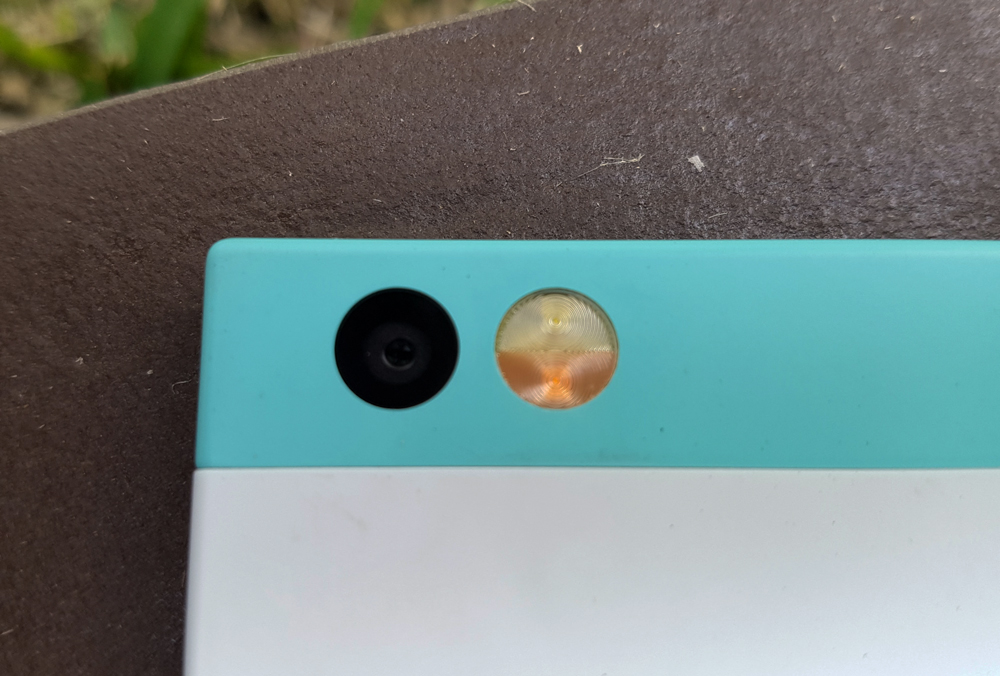
Camera
While I was excited to get my hands on Robin after playing with it a little at CES, leaving behind the Galaxy S6 and Sony Z5 cameras – both known quantities after a decent period of use – for Robin gave me some pause. As if they were reading my mind, Nextbit published a blog post in late January with some camera samples that showed well-focused shots with nice, even exposure that helped to put my mind at ease.
With the actual phone in my hand though, I have to say that it’s a bit hard to recommend it for mobile photography in its current form. Nextbit’s camera software needs work to make it easier to access and more responsive in general use.
The interface feels like a little bit of a throwback to some of Google’s previous camera UIs with a large focus point and a fly-out menu that has some basic mode settings (gridlines, HDR, etc). Awkwardly, it also runs in fullscreen, leading to some confusion about how exactly you get out to your launcher — you end up having to swipe in from the sides and then hit the software home button while its on screen – and if you miss, you’ll end up taking a photo.
Worse, there’s a noticeable lag between when you hit the shutter button and when the photo is actually taken. Nextbit’s acknowledged this as something they intend to fix but only in HDR mode so far. You’ll be uncertain exactly when a photo will be taken and it can lead to some awkward moments – some of my subjects assumed the photo had been been taken because my finger hit the shutter button, and I was left with a blurry photo.
More annoyingly, there’s no camera launch shortcut (accomplished with a double-tap on the power button for Nexus and Samsung phones), save for the bottom-right camera icon on the lockscreen. If you want to get into the camera, the quickest way is to hit the power button to lock the phone, then hit it again to bring up the shortcut and swipe it up. By the time you even get to tell Robin to launch the camera, your moment is gone.
It’s a shame to have the software let down the phone’s camera like this, because Nextbit’s camera samples were right on the money in most respects – the camera takes a nice, well exposed shot that captures a surprising amount of detail in its 13MP sensor. While I’d prefer the camera automatically go to HDR mode when appropriate, shots where I’ve specifically turned it on were lovely.
If you can take the time to focus on your subject and hold the phone steady you’ll find a pretty astonishing amount of detail in 100% blowups of its shots where other more expensive phones lose it.
It’s not without issues, though. Lack of Optical Image Stabilisation hurts in low-light shots (and sometimes in normal lighting too), some light sources can really blow out in the dark, and the camera’s exposure isn’t quite up to par in super bright conditions, like the outdoor scene in the 100% crop demos above. A shame, because the amount of detail captured by the sensor is right up there.
Manual controls are good, with settings available for White Balance, Focus control, Exposure and ISO (up to 3200, although such a high ISO setting doesn’t really seem to be reflected in the photos taken at that spec. For video, Robin offers 4K video capture on the rear camera and 1080p on front.
I’d love Robin’s camera more if its UI were a little better, smarter and faster and if the hardware featured Optical Image Stabilisation, but those features seem to remain at the higher end of the market for now.

Software
Nextbit’s made a point of Robin using near-AOSP Android software, with some concessions for its unique backup options. It also supports Marshmallow’s fingerprint authentication API, although you still need to hit the power button to turn the screen on before you to authenticate.
Robin is one of the first phones to ship with Android 6.0 Marshmallow, although it’s now a little behind with 6.0 (with January 2016 security updates) – it’s not really clear when security updates and Android 6.0.1 will hit the handset.
Near-AOSP is an important point to note, though. While Robin is essentially unchanged “stock” Android, the changes Nextbit’s made to the base Android OS result to integrate their Smart Storage backup service result in a couple of changes that you need to keep in mind.
Nextbit Smart Storage – Cloud Backup and Restore
Nextbit’s cloud backup service, named Smart Storage, has a pretty easy to explain premise: it backs up your apps and photos every night, and it deletes (“archives”) items that it backed up when your phone runs out of space, so that you never have to manually do it. You need to use Nextbit’s launcher and gallery for these features to work for you, though.
Google’s made Android pretty cloud-friendly over the years, but Nextbit’s made some interesting changes behind the scenes around app installation and photo management.
Archived apps remain in the laucher as greyed-out “ghosts” of themselves, and tapping on an archived app restores it from Nextbit’s backup of that app. You can “pin” apps that you don’t want offloaded, but that requires quite a bit of forethought. Therein lies the rub – other launchers won’t be able to deal with Nextbit’s archived nor pinned apps. Similarly, archived photos remain as 1080p thumbnails that can be scrolled through and still exist in the gallery, and if you attempt to zoom in on the photo the full resolution version will be retrieved and swapped in. The effect is like zooming into a low resolution image only for it to suddenly snap into full resolution. Again, other Gallery apps won’t know how to trigger retrieval of the full resolution image, nor will they be able to manage the storage space required to work on those thumbnails without them triggering a backup as individual images.
I feel like Nextbit’s Smart Storage doesn’t make enough of a difference to the way consumers use their phones and free up space when services like Google Photos are prepared to free up space on your device using essentially the same tricks, but manually triggered. App management is less common, but I also feel that the app archive process could result in archival of seldom-used apps (eg, Tripview, a Sydney train timetable app), and doesn’t really fit in with the way I use my phone.
I also really don’t like Nextbit’s launcher. It apes Google’s standard AOSP launcher, but that means it doesn’t address any of the reasons users install third party launchers (and my standard launcher arrangement is a fairly densely-packed Nova configuration). You’re stuck with a 4×4 grid of icons on the home screen with an additional row of 4 pinned apps at the bottom. Pretty standard, but there’s no app drawer. Instead, the bottom right icon in your main grid is given over to something that looks like a Material Design-spec Fast Action Button. I don’t really think that’s an appropriate use of the “FAB”, and it’s taking up valuable space on my home screen! The button offers an all apps A-Z view, a list of Archived apps, and a list of Pinned apps.
Since you can’t remove apps from the launcher, you wind up throwing them into folders and loading up your 4×4 homescreen grid with folders, which show small representations of all the icons inside them. This makes it really busy, and my Robin homescreen has honestly been one of the least pleasant, busiest homescreens for me in the last few years.
I’m stuck with it, unless I turn off app backup and archiving. But then, if I turn off the app archiving I may as well turn off the photo archiving and let Google Photos take over that function for me as well.
It does feel like an alternative with deference to third party launchers could be to replace an app with a dialog offering to reinstall it, thus enabling third party launchers to still play nice on Robin. Opening up some of the archive and restore functions to an API would also allow users to have more options in their choice of launcher.
Given the space that’s not on offer on the homescreens, Robin’s approach to widgets is interesting – they’re not allowed in the launcher’s homescreens, but relegated to an extra space accessed by a long-press on the Recent Apps key. It’s an interesting approach to widgets, but you can’t help but feel it’s brought about by the density and design of the main launcher itself.
Nextbit’s Gallery app also leaves something to be desired. It seems it doesn’t handle zooming into locally-stored photos (ones that haven’t been archived) as smoothly as Google Photos does, often producing jagged edges on imaes that are stored locally, meaning you may as well use Google Photos for pretty much everything – including photo offloading.
It’s also worth noting that Robin ignores your videos, and they could well be the things that take up the most space on your phone. The company says it’s working on video backup, though we don’t know when it’ll be seen. It seems likely that videos would chew through that 100GB of online storage space a lot faster than anything else, though.
Questions also hang over the retrieval of backed-up data. It’s all well and good that the phone backs up my data, but if i lose my Robin and replace it with another type of phone, there’s currently no way to get my photos back. Some comments in Nextbit’s forums indicate that they are aware of this need and are working on a way to let users retrieve their data – but there’s no information about when that might be. Ultimately, it’s just easier to let Google Photos manage my device storage space and handle apps myself.
Robin
Nextbit
- 5.2-inch 1080p IPS LCD
- Gorilla Glass 4
- Snapdragon 808
- 3GB RAM
- 32GB storage, no microSD
- 13MP rear camera, dual tone flash
- 5MP front camera
- Wi-Fi 802.11 a/b/g/n/ac
- Bluetooth 4.0
- GPS
- Cellular:
- GSM: 850/900/1800/1900 MHz
- WCDMA: 850/900/1700/1800/1900/2100 MHz
- 4G LTE: Bands 1/2/3/4/5/7/8/12/17/20/28
- Nano SIM
I’m always hesitant about whether or not I could commit to a midrange phone over a long period of time. My mouse pointer has hovered over the “buy now” button on Nextbit’s site so many times over the last few months. If I’d purchased Robin I wouldn’t be disappointed. There’s a hell of a lot to like here, especially at the price point.
Robin points to a future where even the “little guys” can produce high quality, well-designed phones with great specs. We’ve spoken much about the rise of the midrange over the last 18 months and this phone is one of the current pinnacles.
What you probably need to ask yourself is whether Nextbit’s Smart Storage backup and restore service is something you really need. There are other ways to accomplish the same functions, but you’ll forego the deeper integration into the OS to use them. To me, that trade-off doesn’t seem so bad. Nextbit also needs a way for users to access their data, now. It feels like Smart Storage needs to some more compelling features for it to really shine.
Software aside, the most important thing about Robin is probably not the software, but the hardware. The company’s packed some impressive specs into their first phone, especially considering its price. Robin is a much better phone than it had any right to be, given that it’s Nextbit’s first actual hardware. It has a bright, strong and friendly design that’s unique in the market and feels great in the hand and an OS that mostly adheres to Android’s design guidelines.
Robin is probably one of the most Nexus-like devices on the market at the moment, and given the phone’s design I’d feel happier carrying this around over a Nexus 5X. If you want your phone to be noticed, you really should consider carrying around the Mint version.
The most telling thing about whether or not I’d like to use Robin long-term? Now that the review is over, I need to send it back to Nextbit… and I don’t really want to.

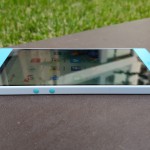
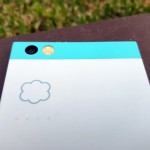
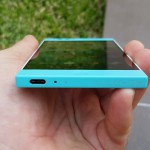


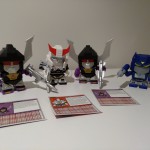





































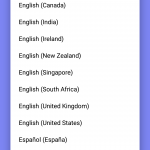
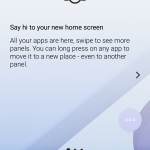


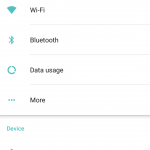
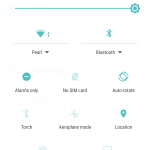

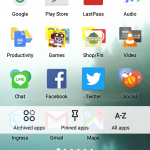

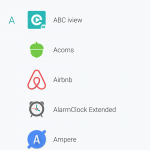
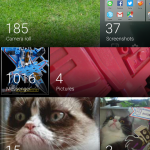


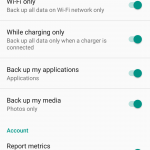




I recognise those Nutella donuts. if only I could remember where 😛
Id rather they did a deal for 100gb with Dropbox or someone known. What happens to my data if the company goes bust next year since it’s all backed up on their own servers
Nice review! I really like this phone. The only thing that makes me nervous about it is the update situation. It’s already running a version (admittedly, a dot version) and two security patches behind on launch…
Thanks for the review. It’s an interesting read.
$US434 equates to $579.That’s a lot of money for a mid range phone. I’m not sure why people wouldn’t go with the Nexus 5X after it’s recent price drop or cheaper options like the OnePlus One, OnePlus Two or Xiaomi Redmi Note 3. It’s a lot of money for the first phone from a company.
Also, having to press the power button before the fingerprint scanner…are they serious? Apparently, this is required with the new Xiaomi Mi5 too. Who wants to press two buttons to turn their screen on?
I always unlock by pressing the button and leaving my finger on it. Works fine. I’m okay with that behaviour, but since the Nexus 5X and 6P have “always on” fingerprint scanners the expected behaviour has become a tap on the sensor to wake up and unlock.
I think if the fingerprint sensor ISN’T the power button then yes, always-on behaviour is desired. Otherwise I’m really not fussed by pressing the button. My finger is there anyway, yknow?
If it’s the same button, then that’s not as bad. I believe with the Mi5, you have to press two different buttons.
Also, on the price, unfortunately the reality is that with the Aussie dollar going down and flagship prices going up, “the midrange” now has a fairly wide price range to cover.
One thing I’ve lost touch with in Android is where it has got to in terms of app data back up. It still seems very hit and miss and I’ve not had time to figure out what the options are for backing up this data on a phone that hasn’t been rooted (so most non Android-enthusiast users). An article on this subject would be most welcome.
Short version is that Google knows the apps you’ve installed from Google Play onto each device, and you can install those apps onto a new phone with a blank configuration. You’ll still need to log into Twitter, Facebook etc.
Developers have had a number of ways of storing configuration in Google Drive, Dropbox etc for a while now but haven’t chosen to implement those methods.
Yeah, the apps are the easy part. It’s the application data that is the important part, and the main area where I still think the Android ecosystem falls dismally behind iOS. Upgrading from one iPhone handset to another is the easiest thing in the world. Upgrading from one Android handset to another still seems fraught with potential data loss, especially games history, etc.